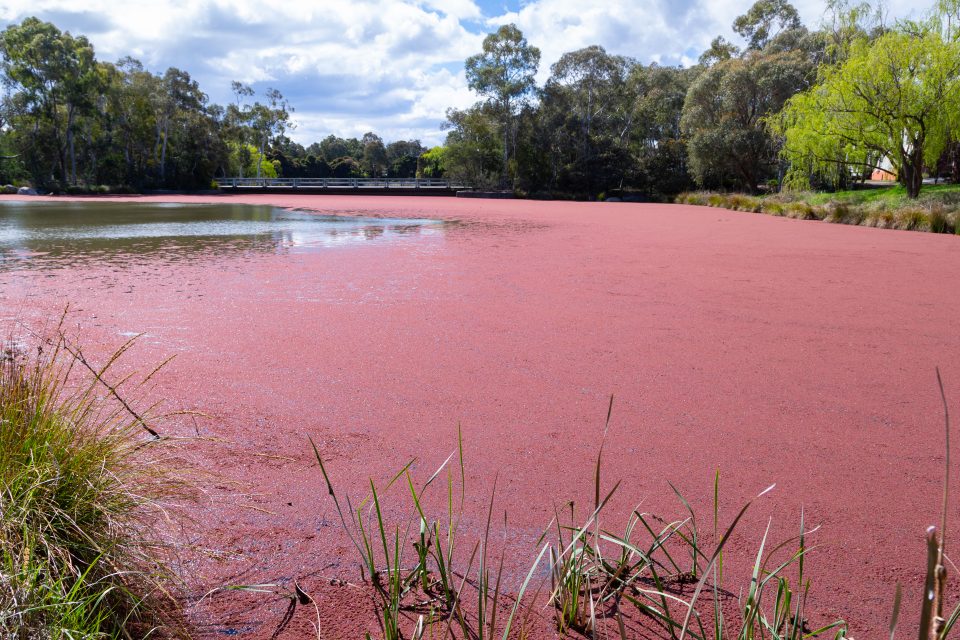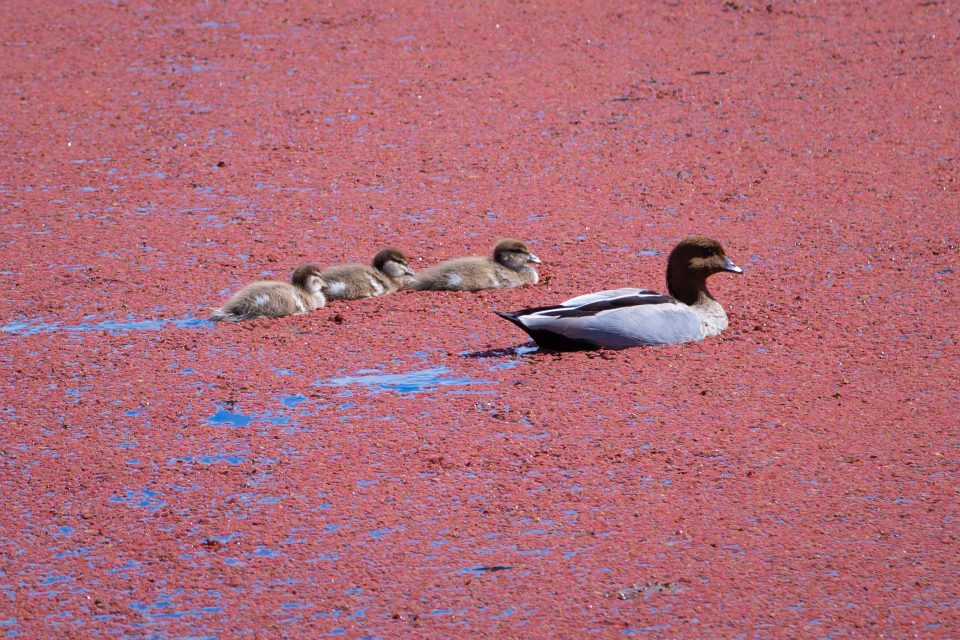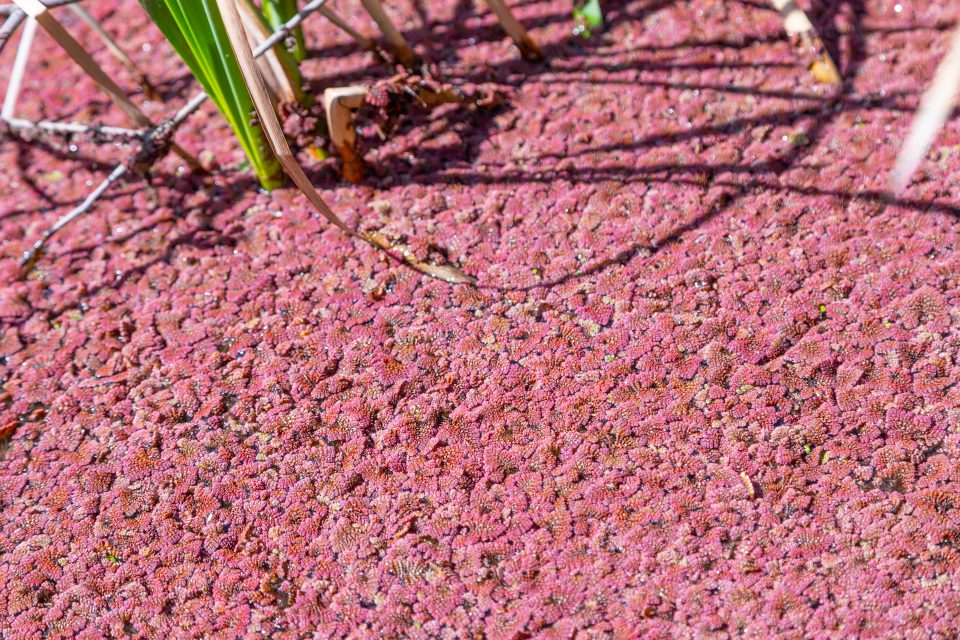
The naturally occurring ‘Pink Lake’ in Bruce is quite a spectacular sight. Photo: Michelle Kroll.
Dubbed by locals as ‘Pink Lake’, one of Canberra’s brightest hidden secrets is in full bloom again.
The naturally occurring pink body of water lies hidden among trees in Bruce, across the road from the University of Canberra.
The bright colour makes for an unusual sight in the bush capital, and is a favourite of local photographers.
The pinkish hue comes from azolla pinnata, an aquatic microfern that is native to Australia.
“It looks great,” says Danswell Starrs, a water scientist with the ACT Environment, Planning and Sustainable Development Directorate.
“It’s an interesting focal point for the community. There’s definitely an active community that has an interest in it, and it’s clear from social media that it’s very popular.”
The body of water is one of two stormwater runoff ponds off Eardley Street in Bruce.
They collect water from Calvary Hospital and the nearby Canberra Institute of Technology campus.

The pink microfern, azolla pinnata, poses no issues to creatures such as fish, or this duck and its ducklings. Photo: Michelle Kroll.
Danswell says while the pond’s colour comes and goes, it is predominantly pink for most of the year.
“It can be anywhere between green in colour, right through to ‘reddy-brown’,” he says. “It depends a little bit on the species.
“The more sunlight they get, the more red they tend to be.”
Azolla pinnata prefers still-water conditions, and especially thrives in the days after rain fills the ponds.
“If you get periods of generally quite unstable conditions, or the pond dries up, then obviously it disappears, but it can bounce back really fast,” says Danswell.
“In really good growing conditions, it can double its biomass in just two days.
“It has the potential to spread and take over that pond in a very short period of time when conditions are right.”
It’s that rapid growth that sees the microfern used as a source of protein for commercial chicken feed and in the aquarium industry.
“People do like it because it can be quite attractive,” says Danswell. “You still have fish and all your other aquatic organisms living naturally in association with it.”

The microfern, azolla pinnata, also has commercial uses. Photo: Michelle Kroll.
Research has found the microfern also absorbs heavy metals, giving it potential uses in bioremediation, a process that uses microorganisms to break down pollutants.
But while it does have commercial benefits, it’s not about to provide an extra income stream for Canberra.
“Maybe if we had hundreds and thousands of stable ponds specifically set up for harvesting azolla then maybe somebody could do it,” says Danswell.
“But you probably wouldn’t want to take away from the Bruce pond as being the ‘Pink Lake’. The community might not like losing their unique status.”
















